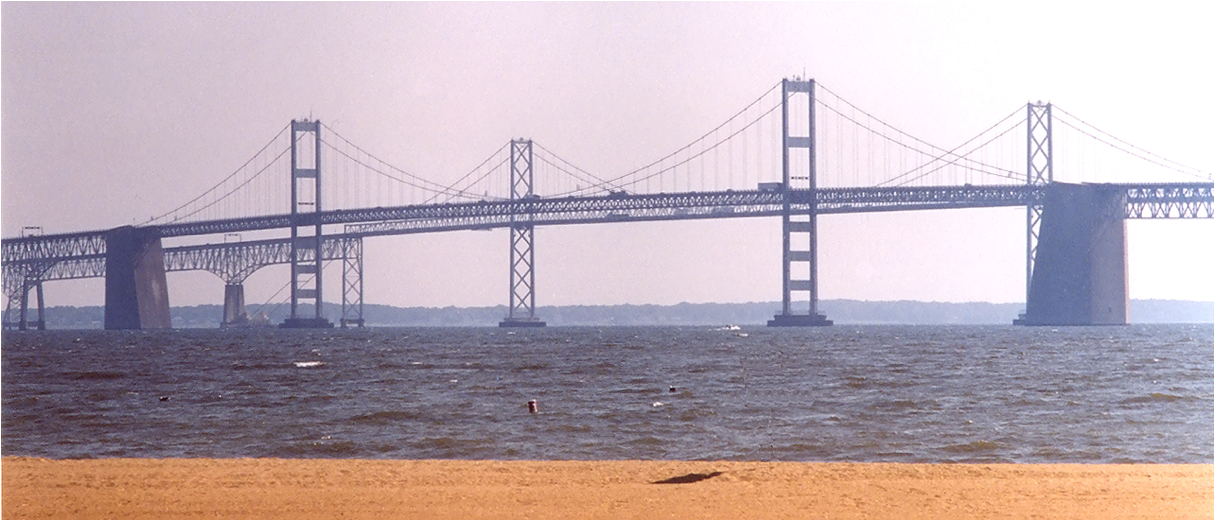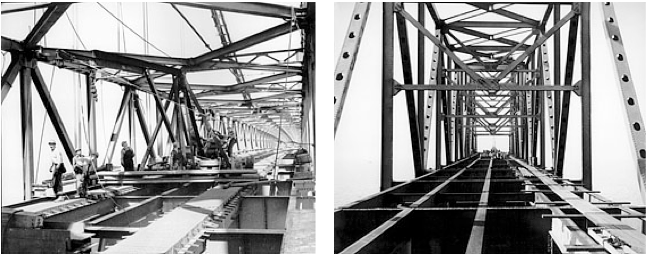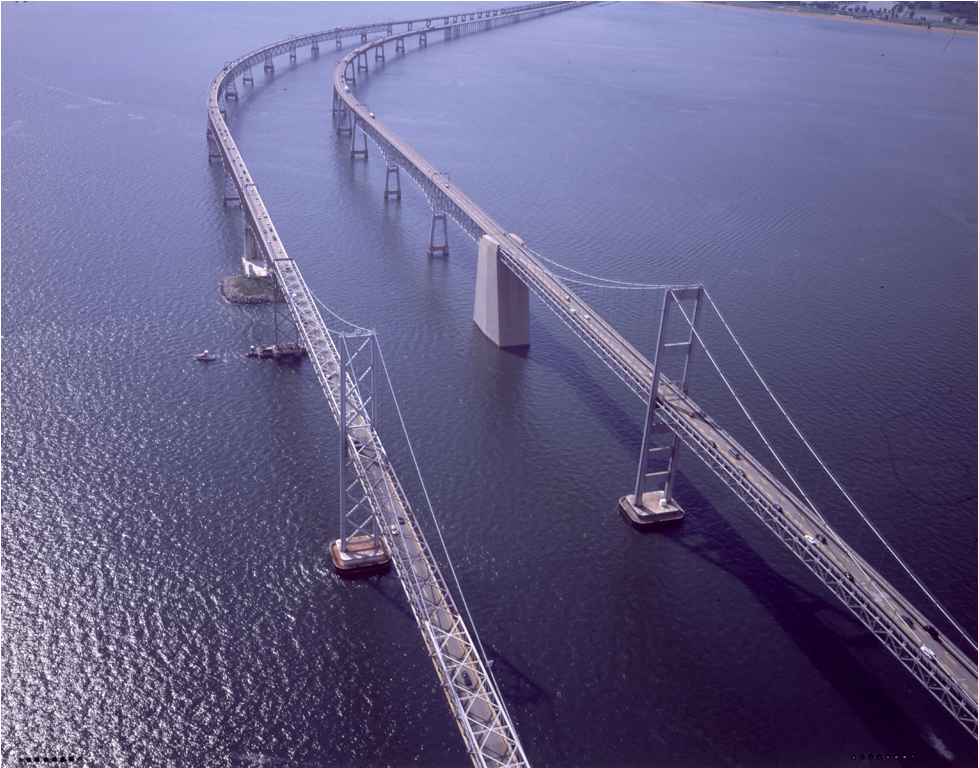This is the ninth in a series of entries celebrating infrastructure achievements in the United States.
What: The William Preston Lane Jr. Memorial (Bay) Bridge, know as The Chesapeake Bay Bridge, is a major dual-span bridge and was the world’s longest continuous over-water, steel bridge at the time of its opening in 1952.
When: Construction was complete on the bridge on July 30th, 1952. The bridge’s second span , which currently carries westbound traffic across the Bay, was completed on June 28, 1973.
Why: Marylanders originally had to rely on boats to cross the Chesapeake Bay to and from the Eastern Shore. But as the population grew and automobiles became a more popular means of transportation, people began to call for a bridge that would cross the Chesapeake.
Stats:
– Length: approximately 4.3 miles
– Height: The eastbound span is 186 ft above the Bay, while the westbound span’s is 200 feet above the Bay.
Interesting facts: Several superstructure sections of the bridge were built on barges and floated into place.
The William Preston Lane, Jr. Memorial (Bay) Bridge is named after the governor who directed the State Roads Commission in 1947 to build it.
The Bay Bridge Walk owes its existence to a Boy Scout leader from Towson, Md.
The Bay Bridge curves the way it does because U.S. Army Corps of Engineers regulations stipulate it must cross the Bay’s shipping channels at a 90-degree angle.
The July 30, 1952 opening ceremonies for the original Bay Bridge (eastbound span) ended after five hours only because the loudspeaker failed.
Tags: bridge, Bridges, Chesapeake Bay, Chesapeake Bay Bridge, Great American Infrastructure, Maryland, William Preston Lane Jr. Memorial (Bay) Bridge









 RSS Feed
RSS Feed
Who were the engineers on the william preston lane bridge completed in 1952.
Not sure about individual names, but the engineering firm that oversaw construction of both spans was J.E. Greiner and Company